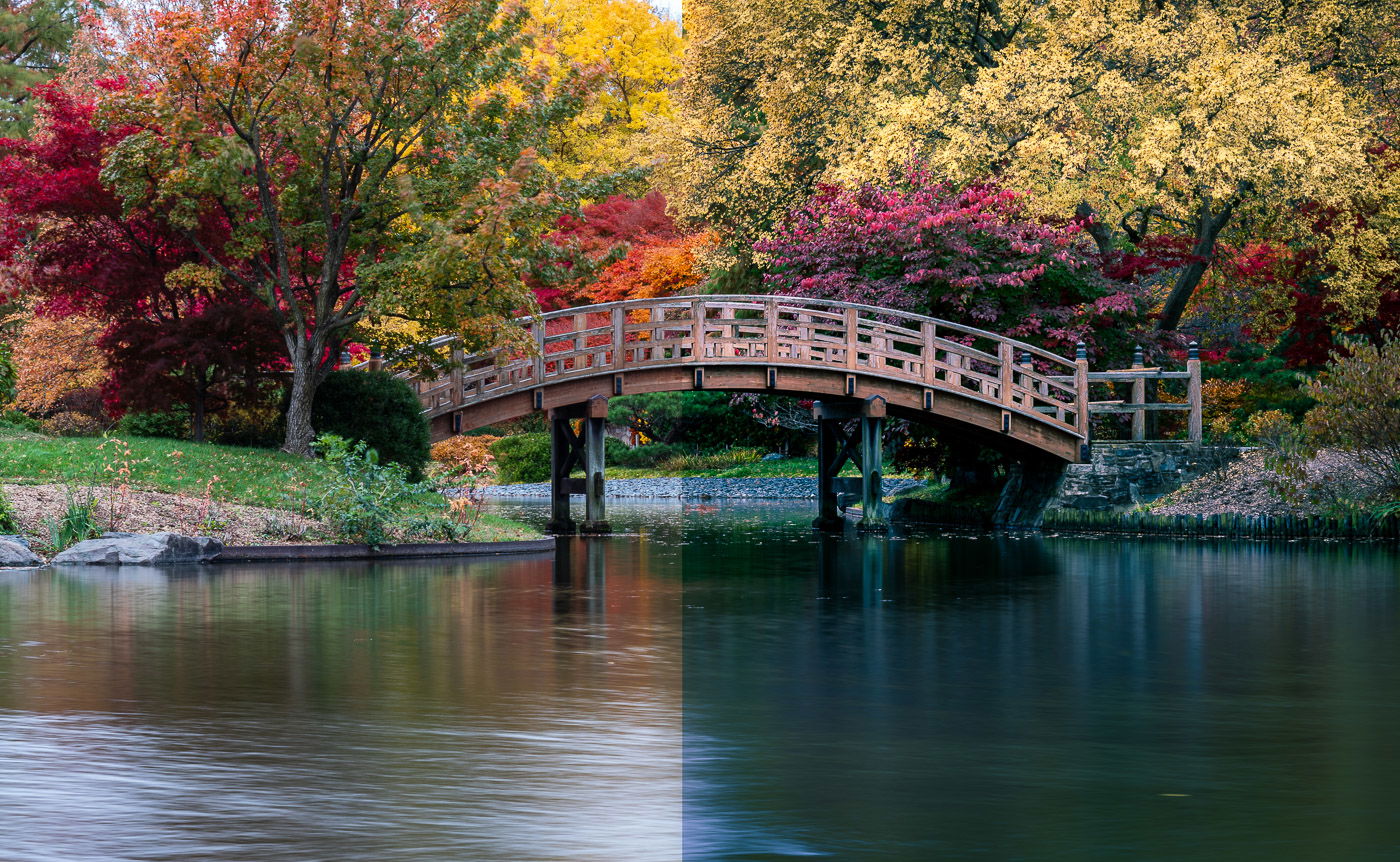How to Run a Photography Business (Complete Guide)
This article explores how to run a photography business. Becoming a professional photographer isn’t easy, and the prospect of running a business can seem daunting. But with the right knowledge and application, you can turn a photography hobby into a career.
There are many things you need to think about when running a photography business. There are essential laws and legal paperwork you need to be aware of, as well as marketing and client-sourcing techniques.
While that might sound complicated, we’re here to help. This article breaks down the process of starting a photography business with handy tutorials packed with vital information. Once you’ve finished, you’ll have the confidence to run a photography business.
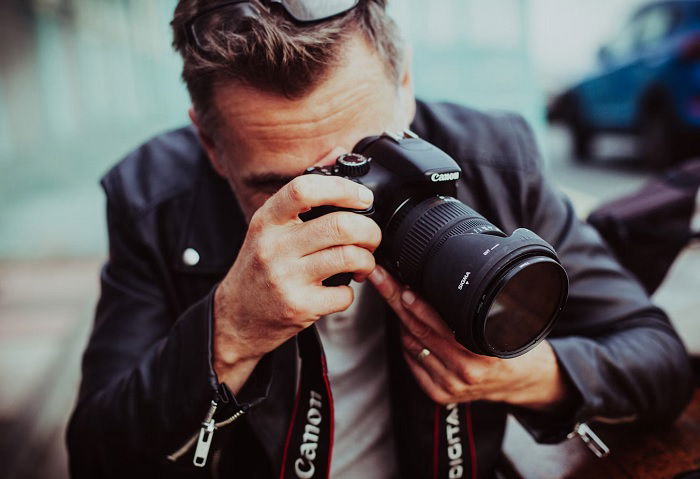
How to Run a Photography Business
When you imagine being a professional photographer, your thoughts are probably dominated by fancy cameras and glamorous photo shoots. These elements do play a part, of course, but professional photographers also have to deal with the less glamorous side of running a business.
You are no longer just a person with a camera. You now have to think of yourself as a professional—as a brand. That means you have to take everything from client correspondence to financial transactions seriously.
Booking studio space and models has to become like second nature to you. You’ll also need to know how to write and complete every type of contract and release form.
Revenue has to be one of your main concerns, as that’s how you put bread on the table. Making money with photography isn’t easy, but there are ways you can diversify your income streams so you always have money flowing in.
We start the article by looking at the basics of becoming a professional photographer. Then we cover marketing and social media strategies to help you get ahead of the competition. We also have everything you need to know about the legal paperwork for photography businesses.
Each section has a link to a full-length article on the topic, so remember to click to learn more.
Becoming a Professional Photographer
Becoming a photographer takes hard work and dedication. Mastering the basics of exposure, depth of field, and light is essential when starting out. Practice as much as possible to improve your skills.
Find your photography niche based on what you enjoy and the types of photography that provide an income. Carefully invest in the right equipment for your niche. Build a strong portfolio that showcases your abilities as a professional photographer in your chosen area.
Share your work online to establish your brand and get exposure. Get organized and always behave professionally to build trust and a solid reputation. Be proactive in finding work and seeking out opportunities in your local area. Always ask for compensation for your services, whether it’s financial payment or credit and exposure.
To learn more about how to become a photographer, we have an in-depth guide that covers everything you need to know.
Is It Easy?
Being a photographer isn’t always easy. It can be a competitive field, with many amateurs willing to work for low pay or even for free. This makes it hard to charge what you’re worth and can lead to getting ripped off.
The pay can be inconsistent, especially when you’re just starting out. You may have to spend a lot of time away from home for jobs. And you’ll encounter demanding clients who expect perfection, even when it’s not realistic.
Photography also requires investing in expensive gear to get professional results. You may find yourself shooting the same subjects repeatedly to specialize in a niche. And post-processing can be a boring but necessary part of the job. Despite the challenges, many photographers find the rewards worth it.
Being a photographer has its difficulties, but it can also be a fulfilling career for those who are passionate about it.
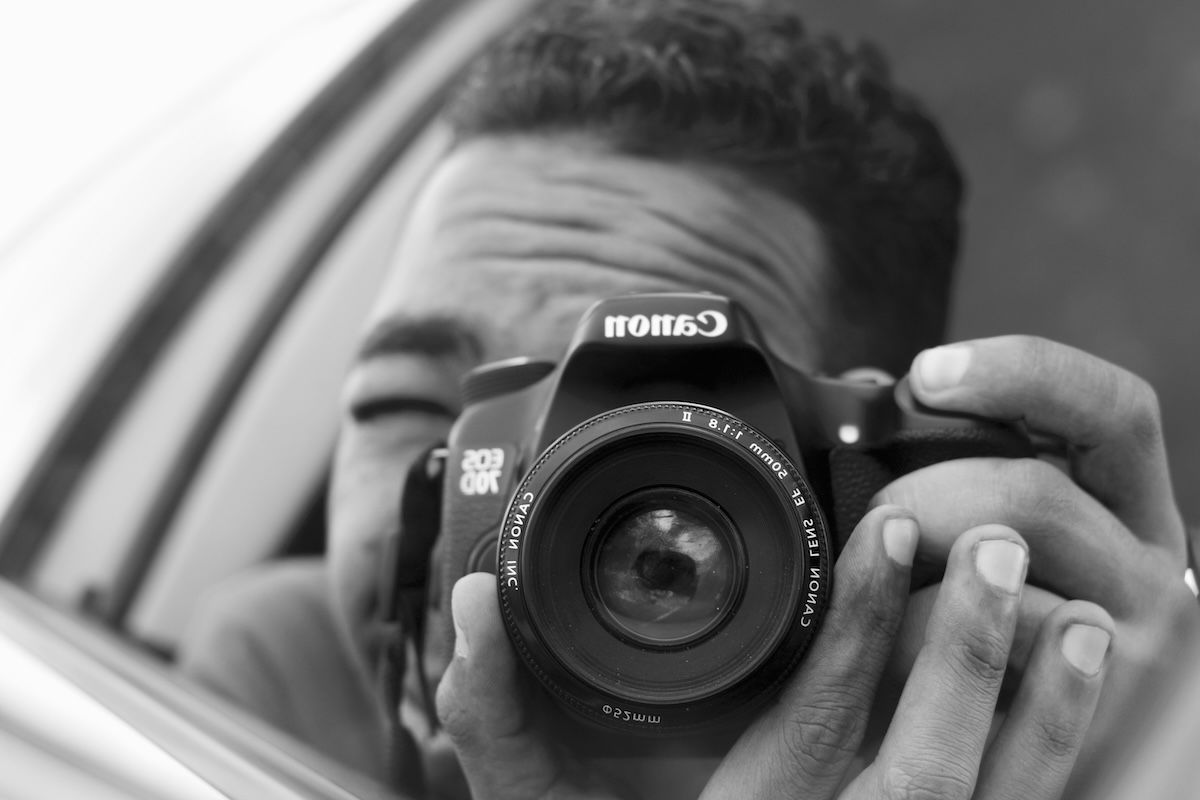
Prep for Your First Shoot
Preparing for your first client photo shoot is important. Create a mood board to share ideas with your client and make sure you’re on the same page. Visit the shooting location ahead of time to check for potential issues like harsh sunlight or crowds.
Bring backup gear in case of technical problems. Rent or borrow extra cameras, lenses, and lighting equipment. Hire an assistant to help with tasks like holding reflectors and changing lenses.
The day before the shoot, finalize your equipment checklist, clean your gear, charge batteries, and look up directions. On the day of the shoot, arrive early to set up and test your lighting. Have model releases and contracts signed upfront. Being prepared will help you focus on creativity during the shoot.
If you’d like to learn more about how to prepare for a photo shoot, we have a detailed guide in this link.
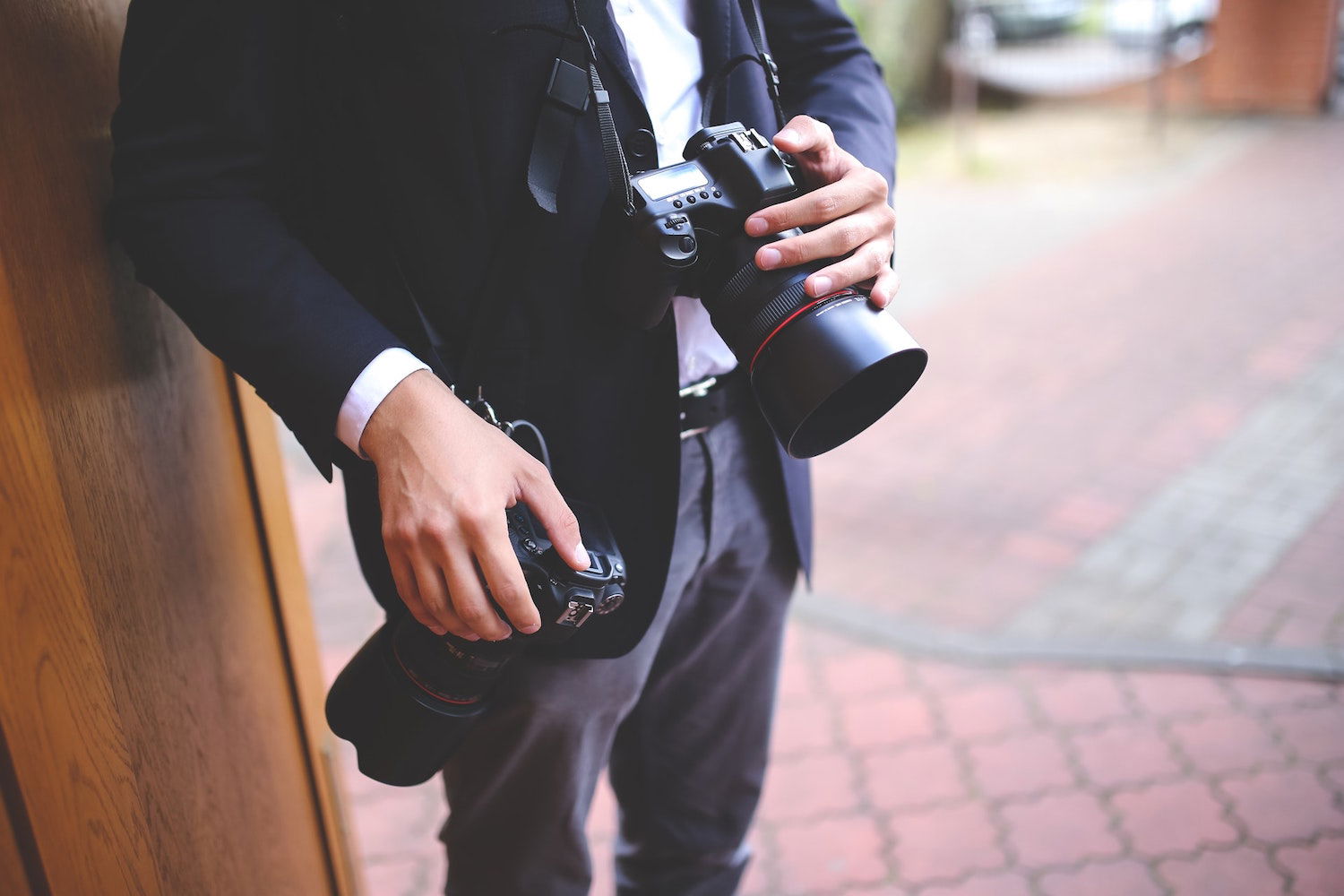
Successful Client Sessions
Planning your photo shoot is key to success. Make a list of ideas and discuss them with your model beforehand. Pack carefully and don’t forget important gear like lenses or batteries.
Embrace the location in your portraits, but keep the focus on your model. Blur the background if needed to avoid distractions. Take a variety of shots, including wide, medium, and close-ups. Have your model look in different directions, not just at the camera.
Control the lighting to set the mood. Use flash or reflectors to soften the light and make your model look their best. Communicate with your model to help them relax and pose naturally. Listen to their ideas and try them out.
Having a successful client photo shoot takes practice, but these tips will help you capture stunning portraits.

Studio Photography Basics
Setting up a photography studio doesn’t have to be complicated. You can start with just a background and stand. If you have plenty of window light, you can achieve professional results even in a small space.
As you earn more, consider buying artificial lights. Begin with one light and modifier, then grow your kit as needed for more complex lighting setups. Take your time getting used to the equipment.
Before you know it, you’ll have a full-size studio that can handle all your photography needs.
If you want to learn more about studio photography, we have a detailed guide that covers everything from equipment to lighting techniques.
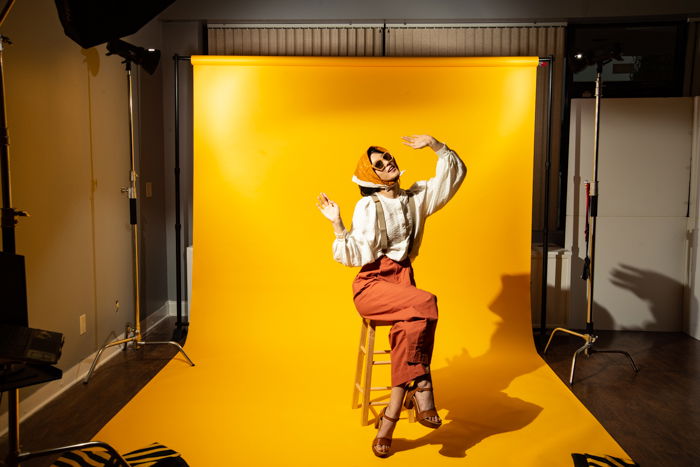
Responding to Requests
As a photographer, you may receive requests for free photography. While it can be flattering to get attention, it’s important to remember that your time and skills are valuable. Before agreeing to work for free, consider the costs and benefits.
There are some situations where offering a free photo shoot can be beneficial, such as when building your portfolio or getting credit from a well-known publication.
However, in most cases, it’s best to politely decline requests for free photography. Explain that you appreciate their interest but cannot allow your photos to be used without payment due to the costs associated with taking and editing them.
If the requester is still interested, provide them with your reasonable licensing rates. The price per photo will depend on factors such as the size of the image, the publication’s circulation, and the duration of use.
By conducting yourself professionally and knowing your worth, you can successfully navigate requests for free photography.
Click this link to learn more about responding to requests for free photography.

Starting Your Photography Business
Starting a photography business requires careful planning. Create a business plan that outlines your structure, target market, finances, and long-term vision. Consider diversifying your income streams with photo shoots, classes, and online courses.
Choose a business structure like a sole proprietorship, partnership, LLC, or corporation. This determines the paperwork you’ll need to file. Pick a memorable name for your business that reflects your long-term goals.
Build a marketing plan based on your target clients. Use social media, blogs, or community events to reach them. Focus on building relationships and making your clients happy.
Growing a successful photography business takes time and hard work, so be patient and stay committed to your goals.
If you’d like to learn more about starting a photography business, we have a detailed guide with all the essential info.
What You Need
Starting a photography business requires some essential equipment. A full-frame camera like the Canon EOS RP is a good entry point for serious photographers.
Lenses are just as important as the camera. A couple of good-quality, fast lenses will give you the sharp, high-quality imagery that you need as a professional. Prime lenses tend to be sharper than zoom lenses.
Other important equipment includes a sturdy tripod, memory cards, a card reader, extra batteries and charger, lens filters, lens hoods, backup drives, a color calibrator, a color checker, a grey card, a reflector kit, and possibly a lighting kit with modifiers and stands.
Check out our full article if you’d like to learn more about what you need to start a photography business.
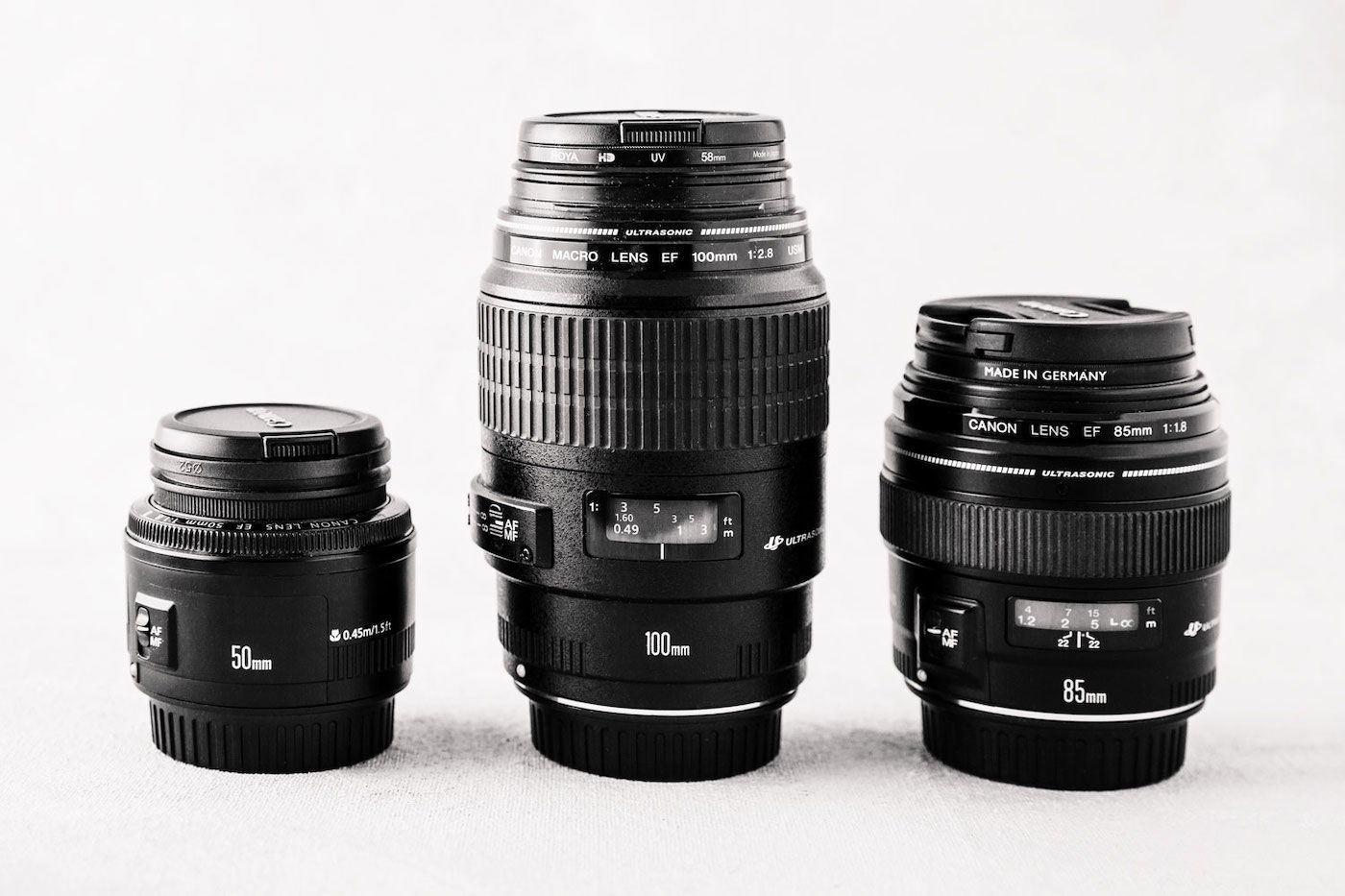
Writing a Business Plan
A photography business plan is a road map to success. It outlines your goals and how you’ll achieve them. Your plan should include an executive summary, a description of your services, your target market, and marketing strategies.
Assess your competition and find what makes you unique. Develop a timeline and consider your operations strategy. Plan your financials for the first three years, including expenses like gear, software, and marketing.
A photography business plan is key to a successful photography career. It helps you prepare and set goals. Start working on yours today, and you’ll be ahead of most photographers who don’t have a plan.
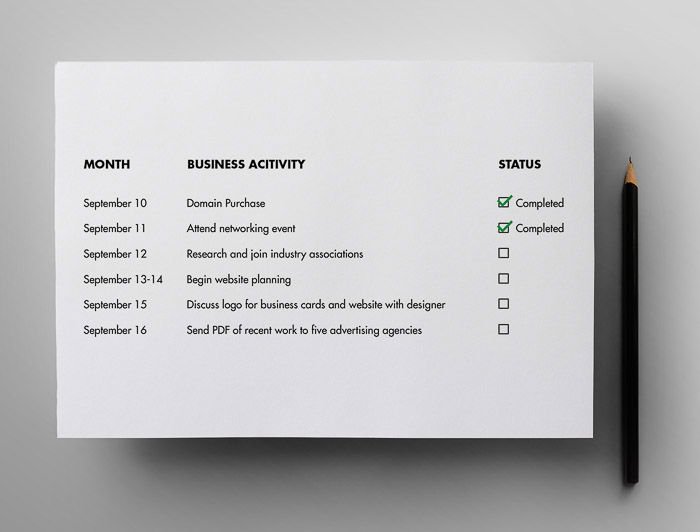
The Costs
Running a photography business can be expensive. There are many costs to consider, such as liability insurance, web hosting, backup drives, memory cards, batteries, software subscriptions, and more. These expenses add up quickly and can make it challenging to turn a profit.
It’s important to understand the cost of doing business (CODB) before setting your prices. Your CODB is the total amount it costs you to run your business, including all monthly and annual expenses. Anything you make over that amount is your profit.
When determining your rates, consider your living expenses and savings goals in addition to your CODB. Price yourself high enough to pay your overhead, turn a profit, and put some aside for slower periods or gear upgrades.
By understanding your cost of doing business, you can set prices that reflect your value and ensure the sustainability of your business.

Finding a Studio
Finding a cheap photography studio rental is possible, even on a limited budget. Consider unusual locations like classrooms, museums, or rec centers that rent out space by the hour or day. Airbnb listings can also work well, and some are even dedicated studio spaces.
Talking to a realtor about empty retail or office spaces available for temporary rental is another option. You can also use the client’s home or office if it’s suitable for the shoot. Joining a studio co-op allows you to share the cost of a dedicated space with other photographers.
Creating a studio in your own home is a popular choice for many photographers starting out. Finally, taking the studio outdoors can work for certain types of shoots and even boost creativity.
To learn more about photography studio rental, check out our in-depth guide.
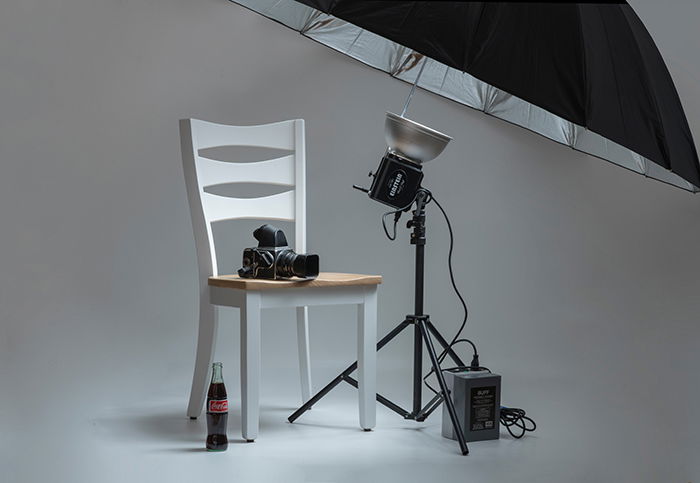
Shot Lists
A photography shot list is a great way to stay organized during a photo shoot. It’s essentially a checklist of the images you want to capture. Shot lists can be simple written notes or more advanced, like sketches or storyboard-style illustrations.
Using a shot list opens up communication between you and your client. It helps manage expectations and acts as proof of what was agreed upon. A shot list also makes the most of your time by keeping you focused on the shots you need.
To create a shot list, consult with your client about their needs and expectations. Write down all the shots that come to mind, then narrow it down.
Break your list into sections like must-haves, detail shots, and wide shots. When shooting, keep your shot list handy on your phone for quick reference.
Photography shot lists are a valuable tool for efficiently capturing all the important images. Check out our full article for setting up a complete shot list.

Logo Ideas
A photography logo is the first thing potential clients see, so it’s important to create one that represents your brand. Using an acronym of your business name can keep your logo compact and recognizable. A signature or script text adds a personal touch and is unique to you.
Simplicity is key—a bold font makes a statement about your professionalism. Incorporating photography imagery like a camera or film roll clarifies that you’re a photographer. Using your initials to create a symbol—like turning them into a tripod—is creative and memorable.
Your logo should show your photography style and niche, whether it’s analog, landscape, or wedding photography. A simple illustration style with a hand-drawn feel can also give your logo a distinct look.
Creating photography logo ideas can be tricky, but with a little inspiration, you can create the perfect one for your business.
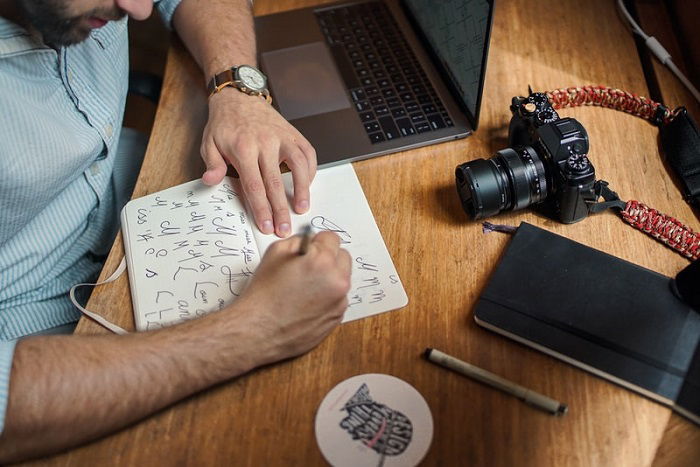
Business Card Designs
Photography business cards are an essential tool for networking and showcasing your unique style. They allow you to quickly share your contact information and give potential clients a glimpse of your work.
When designing your photography business card, include your name, email address, website, and any relevant social media accounts. You can also add a QR code that links to your online portfolio or website.
To make your business card stand out, consider using unique materials like transparent or metallic paper, or opt for an unusual shape or size. Including a small print of one of your photos is another great way to showcase your skills and style.
If you’re interested in learning more about photography business cards, there are many creative designs and ideas to explore in our full-length article.
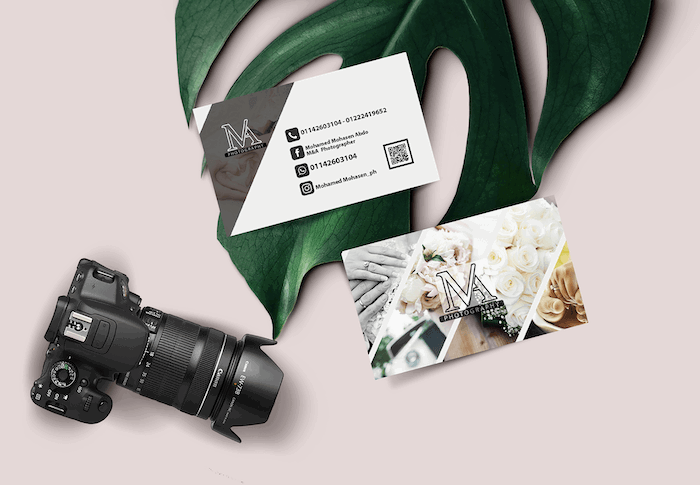
Cliche Name Game
Naming your photography business can be a challenge. When you’re feeling stuck, take a break and try our fun photography name generator for inspiration.
The generator combines a positive adjective, something pretty or colorful, and a funny way of saying photo or photography. The results may sound cheesy, but they can shake up your creative energy and lead to unexpected ideas.
Remember, the best business names are easy to remember and give customers a sense of what you do. If you specialize in a certain niche, consider including that in your name.
For more tips on naming your photography business, read our photography name generator article.

The Legal Side of Starting a Business
To start a photography business legally, you need to understand the laws in your country. Copyright laws protect your photos, giving you ownership and control. However, you may need a release form to use photos with recognizable people or private property for commercial purposes.
It’s important to have the right legal paperwork. Photography contracts protect both you and your client by setting clear expectations. You may also need a photography license, depending on your location.
A photo licensing agreement outlines how a client can use your images. Photo release forms grant permission to use an image and are essential for photographing people or property.
Take a deeper dive into the laws and legalities of running a photography business in our detailed article.
Must-Know Photography Laws
Photographers must understand copyright law if they want to protect their work correctly. Copyright is automatically applied to photographs at the moment of creation, giving the photographer ownership and control over the image. This means the photographer can reproduce, sell, and use the photo however they wish.
However, there are some restrictions when photographing people or private property. In the U.S., a photographer needs a release form to use someone’s likeness commercially.
There are some exceptions for photojournalism and fine art. But in general, you can’t do whatever you want with a photo of someone without their permission.
It’s important for photographers to know their rights and responsibilities when it comes to copyright law. Understanding concepts like commercial use, fair use, release forms, and the difference between public and private property is essential.
By educating themselves on photography laws, photographers can avoid legal issues and protect their creative work.

Photo Licensing Agreement
A photo licensing agreement is a contract that grants specific usage rights to a client or collaborator.
The agreement outlines how the image can be used, such as in print or online, the number of people who will see it, and for how long. This protects you as the creator of the image and helps avoid misunderstandings with clients.
Clients may not understand why they need a licensing agreement. They might think they own the images and can use them however they want. In this case, you’ll need to educate them on the transaction and how it works.
The licensing agreement should be specific about the end use of the image and the brand’s visibility. High-profile businesses should have different terms and prices than small local businesses.
Click on this link if you’d like to learn more about photo licensing agreements.

Photo Release Form
A photo release form is a contract between the photographer and the subject that grants permission to use the image. It’s required in the U.S. to use someone’s likeness commercially. The form can include limits on usage and an expiration date.
There are different types of photo release forms. Model release forms are for photographing people, while property release forms cover buildings and objects. Print release forms give clients permission to make prints. Minor release forms are signed by a parent or guardian for subjects under 18.
You need a photo release form if the subject is recognizable and the photo will be used commercially or for advertising.
To learn more about photo release forms, including free templates you can use, check out our in-depth guide.

Model Release Form
A model release form is a legal contract between a photographer and the subject they photograph. It’s one of the most important documents for photographers, as it protects both parties and prevents future complications or lawsuits.
The form outlines the rights of the photographer, client, and model regarding the use of the images.
Model release forms are essential for commercial photography, where the photos may be used for promotion or sales. However, the specific requirements vary depending on the country, state, and intended use of the images.
It’s crucial to research local laws and regulations to ensure your model release form covers all necessary aspects.
To make the process easier, consider using a template rather than creating your own from scratch. A well-written model release form should include the subject’s personal information, a witness signature, and clear terms regarding the usage rights of the images.
Read all about model release forms in our educational article.

Marketing for Photographers
Marketing is a top priority for any professional photographer who wants to succeed. Building a professional website has never been easier or more affordable. And social media can help boost your online profile and make your work more visible. Sending your photos to magazines is another great way to get more eyes on your work.
To learn more about marketing for photographers, including SEO, sales, and more, this article is a helpful resource with in-depth information on these topics.
Easy Marketing Strategies
As a freelance photographer, you won’t have a dedicated marketing team to promote you and your work. That’s why having a basic understanding of professional marketing is so important.
Ask for referrals from friends, family, and clients. Make sure you have a professional website with a portfolio and testimonials ready. Producing great photos encourages people to recommend you and your services to others.
Create targeted social media ad campaigns to attract your ideal audience. Use eye-catching images, and behind-the-scenes videos or before-and-after comparisons can go viral.
Attend local business networking events to build relationships. Bring business cards and flyers, and be prepared to briefly introduce yourself. Look for real estate agents or brokers who may need your services.
Real estate photography marketing involves a variety of strategies to reach potential clients and showcase your work. By implementing these tips consistently, you can grow your business and attract more customers in your local market.

Getting Noticed
To get your photography noticed, make sure your images are high-quality and visually interesting. Experiment with creative photo projects and share them on photography websites to showcase your skills.
Running a photography blog is a great way to build your online presence and attract more viewers to your work.
Entering photography contests can help you gain recognition, but be sure to read the terms and conditions carefully. Getting your photos published in magazines or newspapers, both online and locally, can attract potential clients.
Joining photography forums and social networks like Facebook, Instagram, Twitter, and LinkedIn allows you to reach a wide audience.
Uploading your work to photo-sharing platforms like Flickr, 500px, and Behance can provide exposure and networking opportunities. If you have compelling images, you may even gain new clients.
Learn more about getting your photography noticed with our helpful guide.

Attracting Clients
Identifying your ideal client is key to targeting the right audience for your photography business. Research your target market’s media consumption habits to focus your marketing efforts on the most relevant platforms. This will save you time and money.
Attract more clients by launching targeted social media campaigns on platforms like Facebook and Instagram. You can also host an open photo shoot to show potential clients what it’s like to work with you. It’s a great opportunity to network and showcase your talent.
Create a quarterly email campaign featuring your latest work to remind your clients of your services. Offer special promotions and loyalty programs to attract new clients and retain existing ones. Incentivize people to refer you, but be careful not to cheapen your brand.
If you’re looking to get photography clients, consider joining freelancing websites or volunteering to photograph events in your local community.

Writing a Website Bio
Writing a photographer bio for your website is an important task. Your bio introduces potential clients to the person behind the camera, adding depth and personality to your online presence. Keep your bio simple and concise, using clear language that’s easy to understand.
Your bio should reflect your unique personality as a photographer. If you have a fun and lighthearted style, feel free to inject some humor into your writing. However, if you’re a serious professional, stick to the facts and avoid forcing jokes where they don’t fit naturally.
Include relevant information about your photography career, such as notable commissions, awards, or achievements. A photo of yourself can also add a nice personal touch.
By crafting a well-written bio that showcases your skills and personality, you’ll create a strong first impression for potential clients visiting your website.
We have more valuable information about writing a photographer bio in this blog post.

Website Builders
Finding the best website builder for photographers is essential to start your business. Every photographer needs their own website as a portfolio, storefront, and business hub. The more professional your website, the more success you’ll have as a photographer.
Wix is the best website builder for photographers. It’s a well-priced website builder anyone can use. Wix is a no-code platform with drag-and-drop design tools, so you don’t need web design experience. There are thousands of design options to develop your own branding.
If you’d like to see more of the best website builders for photographers, our list has all the top options.
![]()
SEO
SEO is important for photographers to drive traffic to their website and attract more clients. Search engines like Google index and rank web pages based on relevance to a user’s search query. Optimizing your website and online presence can help you appear higher in search results.
To improve your photography website’s SEO, make sure your site is mobile-friendly and contains relevant keywords. Blogging regularly with high-quality content keeps your site fresh.
Getting backlinks from other reputable websites and maintaining an active social media presence also boosts your search rankings.
Setting up a free Google Business listing allows you to appear in local search results and on Google Maps. Use Google Analytics to track your website traffic and learn more about your visitors.
SEO takes sustained effort, but it’s worth it to generate more organic traffic and grow your photography business.
SEO for photographers is important for any photographer with a website or blog, so click the link to find out more.

Social Media for Photographers
Social media is a powerful tool for photographers to showcase their work and attract clients. Instagram and Facebook are two of the most popular platforms. To get the most out of them, it’s important to post high-quality photos consistently and engage with your followers.
On Instagram, use relevant hashtags to make your photos easier to find. Write engaging captions that tell a story or provide context for your images. Interact with other accounts in your niche to build a community around your work.
For Facebook, create a dedicated photography page separate from your personal profile. Share your best photos and include links to your website or portfolio. Encourage fans to like and share your page to expand your reach.
By building a strong presence on social media, you can grow your photography business and connect with potential clients.
To learn more about social media for photographers, our in-depth guide covers everything you need to know.
Creating a Facebook photography page is a great way to showcase your work and build a community of fans. To get the most out of your page, select the right category when registering.
Listing yourself as a website rather than a public figure has advantages, such as being able to reach more than 10,000 fans.
Fill in the About section with information about who you are and what you do. This will help your page show up in Google searches.
Choose a profile picture that best represents your photography business, and use the cover photo to advertise your services or display your best work.
Share your portfolio on your Facebook photography page, but be selective. Only post your best images, as the album is only as strong as its weakest photo.
Watermark your photos to protect them from theft, but keep the watermark small and unobtrusive. Post regularly to keep your fans engaged, and add a call-to-action button to direct them to your website.
By following these tips, you can create an effective Facebook photography page that showcases your work and attracts new clients.

Instagram is probably the best social media platform for photographers. It allows you to showcase your best work, generate a following, and attract new clients and collaborators.
Use Instagram as a social media diary to look more approachable. Post behind-the-scenes shots that your audience can relate to. Choose a username and fill out your bio so people can find you.
Find accounts important in your field for reposts and targeted campaigns. Use niche hashtags with under 250,000 posts to make your photos stand out. Be consistent with your posts to gain relevant followers.
Reply to all comments to broaden your Instagram network. Use your visibility to reach out to brands for photography opportunities. Keep your captions simple to hold people’s attention.
Building and maintaining a popular Instagram photography account takes time and effort, but it can lead to lots of business opportunities.

Writing Captions
Writing great captions for Instagram can make a big difference in how your photos are received. A clever or funny caption adds to the photo’s impact. Keep the caption informative but catchy, and explain the story behind the image.
Write in a conversational tone using present tense, as if talking to a friend. The caption’s style should fit the platform, and consider character limits. On Instagram, captions under 125 characters are the most readable.
Identify key people in the photo, and consider using a relevant quote or song lyrics. The caption should add value and not just state the obvious. Captions that create involvement and engage viewers often work best on social media.
Captions for Instagram take some thought, but the right one enhances your photo’s message. With practice, you’ll find it easy to write the best captions for your images.

Using Hashtags
Hashtags are a great way to get your photos seen by more people on Instagram. Using the right hashtags can help you reach a wider audience and gain more exposure for your work.
It’s important to use specific, niche hashtags rather than broad, popular ones. Your photos will get lost in the sea of content if you use hashtags with millions of posts. Instead, find hashtags that are relevant to your photography style and have an active, engaged community.
You can also create your own unique hashtags to stand out from the crowd. This allows you to build a community around your brand and feature your followers’ photos.
By using a mix of popular and niche hashtags, as well as your own branded hashtags, you can maximize your reach and engagement on Instagram with photography hashtags.

Profitable Photography Careers
If you’re looking for profitable photography careers, there are several options to consider. Stock photography is a great way to make money from your images. Capture photos that are in demand and submit them to stock agencies to create a steady income stream.
Travel photography is another option. You can sell your photos to magazines, newspapers, tour operators, and travel companies. Wedding photography can also be very profitable, especially during the summer months.
Other photography careers include commercial photography, editorial photography, product photography, photojournalism, fitness photography, and real estate photography. With hard work and dedication, you can turn your passion for photography into a successful career.
Check out the full article on photography careers to see which is best for your business model.
Stock Photography
Taking stock photos that sell requires capturing high-quality images that are in demand. Research current trends and plan your shoots around popular concepts like business, lifestyle, and outdoor activities. Use a shot list to ensure you capture all the angles and scenarios you need.
Edit your files and choose only the best images to sell. Add relevant keywords and descriptions so potential buyers can find them. You can sell your stock photos through agencies or market them yourself.
Learn more about how to take stock photos with our in-depth tutorial.

Travel Photography
Travel photography jobs can be an exciting and rewarding career path for those with a passion for photography and adventure. To succeed, you’ll need exceptional photography skills that set your work apart from the billions of travel photos uploaded daily.
Business skills are equally important, as you’ll need to market yourself effectively to find work.
Travel photography jobs can be physically demanding, requiring long hikes with heavy gear and the ability to handle challenging weather conditions. You may also face irregular sleep schedules and spend a lot of time alone or with strangers.
If you’re serious about pursuing travel photography jobs, having a strong online presence is essential. A professional website showcasing your portfolio, a blog to share your work and experiences, and active social media accounts can help you get noticed.
With hard work, diverse income streams like print sales, stock licensing, writing, and teaching, and a willingness to get creative, you can turn your love for travel and photography into a successful career.
Read our full post on travel photography jobs to start making money from your next adventure.
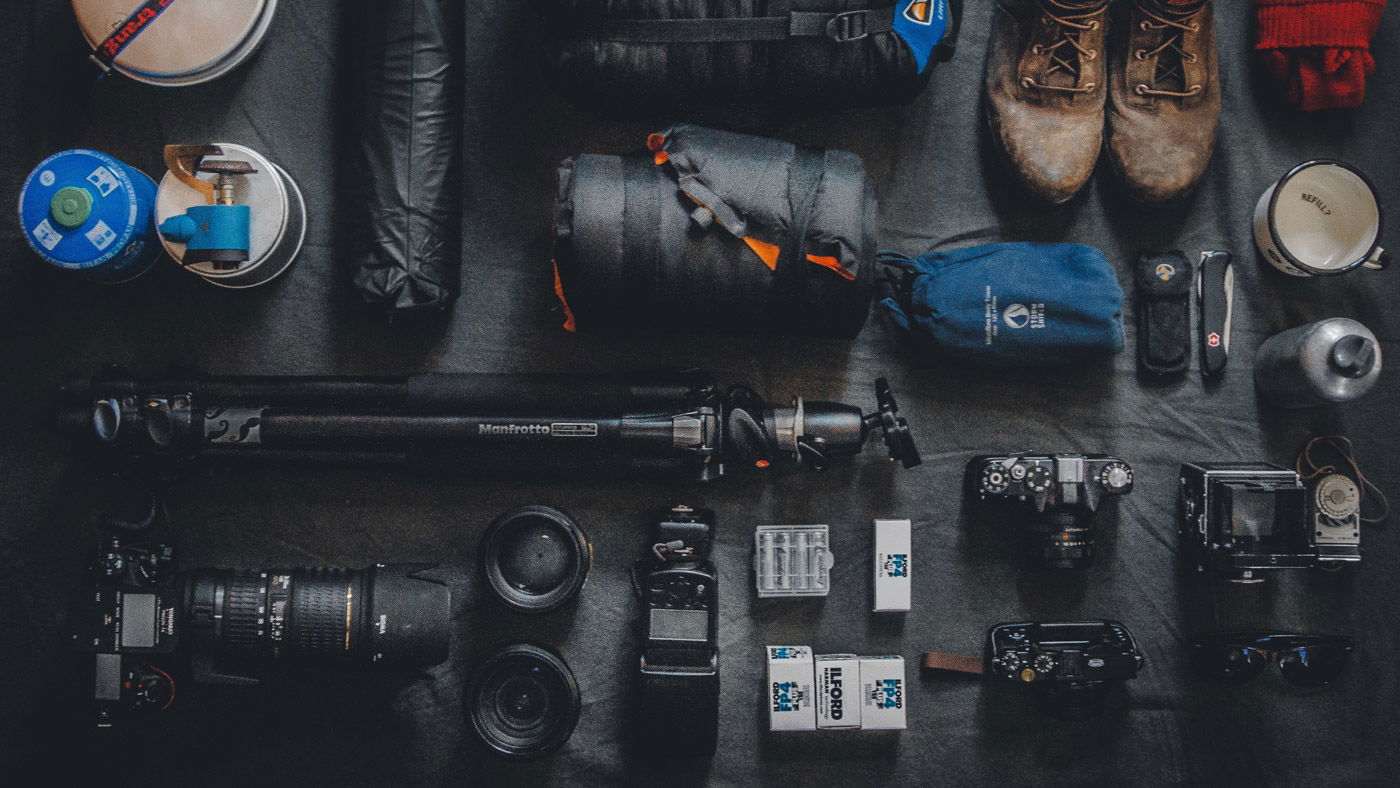
Commercial Photography
Commercial photography covers a wide range of niches, from fashion and product photos to food and architectural images. To succeed, you need to keep your network active, maintain a professional attitude, and ensure you’re shooting with the best gear.
Stay on top of the latest photography trends and develop your own distinct style to stand out. Be creative in your approach while still meeting the client’s needs.
Avoid rookie mistakes by continuing to learn and improve your skills. Build a strong portfolio showcasing your best work in different styles.
Always carry business cards and gather recommendations to attract new clients. When working with a client, communicate clearly to understand their requirements, provide an accurate quote, and discuss usage rights.
Commercial photography can be very rewarding if you’re willing to work hard. It can also be one of the most lucrative areas of professional photography, so it’s definitely worth considering.

Product Photography
Product photography is a broad field with many different specialties. From 360-degree shots to flat lays, there’s a type of product photography for every product and style.
Some popular types include Amazon product photography, which requires a white background and specific composition. Photographing artwork, clothing, furniture, and jewelry each has its own unique challenges and techniques to master.
Lifestyle product photography shows items in real-life scenarios to help customers imagine using the products themselves. Other niches like makeup, nail, and beer photography are growing in popularity for advertising and promotion.
To learn more about the various types of product photography, check out our detailed blog post.

Magazine Photographer
Becoming a magazine photographer takes hard work and dedication. Choose a specialty to stand out from other photographers. Ask friends to pose for practice shoots to get comfortable with your camera.
You don’t need expensive gear when starting out. Even entry-level mirrorless cameras with a prime lens are enough to create magazine-worthy images. Build a strong portfolio with at least 10 of your best photos that showcase your unique style.
Promote your work on Instagram to increase your reach. Study the photographs in magazines you want to work with to understand their style. Contact editors to introduce yourself and share your portfolio. To become a magazine photographer, you need to create work that is truly unique.
If you’d like to learn more about becoming a magazine photographer, we have a detailed guide that covers everything you need to know.

Internships
Photography internships offer students valuable work experience and a chance to fast-track their careers. Interning with a professional photographer or studio while studying can help you network and gain practical skills that you can’t get in the classroom.
During an internship, you’ll apply what you’ve learned to real-world situations and gain insight into the business side of photography. You may assist with lighting setups, post on social media, or help stylists on set.
The amount of hands-on shooting experience varies depending on the photographer and their niche.
Internships are a great way to evaluate your career goals and find gaps in your knowledge. While they may not lead to immediate employment, they can open doors for future opportunities.
To learn more about photography internships, including how to find one and what to expect, follow the link to the full article.
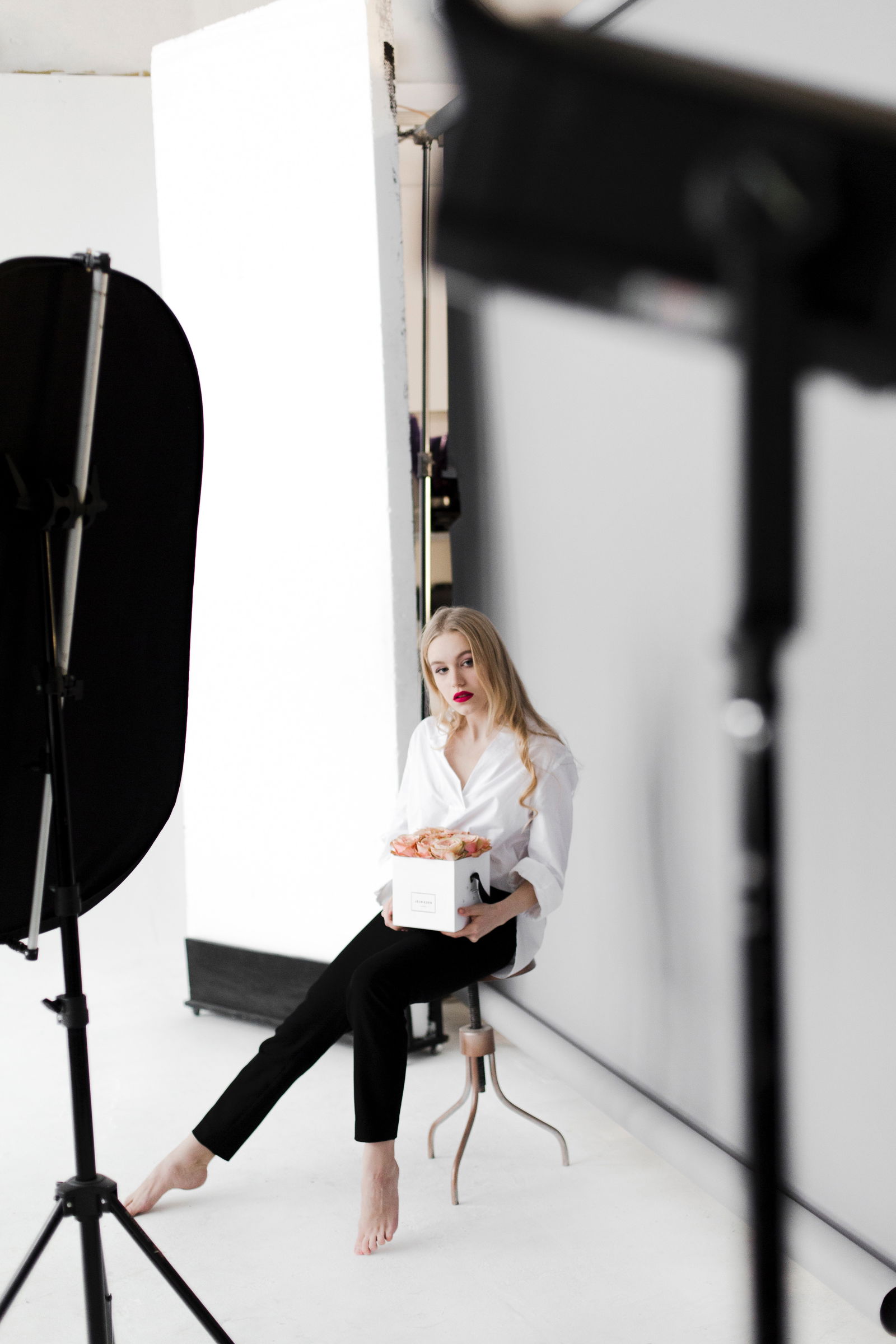
How to Make Money as a Photographer
Transforming your photography hobby into a career takes effort, but there are many ways to make money with your skills. Finding reliable income streams is key to becoming a professional photographer.
You can sell your services as a photographer or sell the photos you create. Selling landscape photos, stock photography, and doing real estate photography are some of the best ways to get started. You can also sell prints online, offer Lightroom presets, or even turn your images into NFTs.
To be successful, research what subjects are in demand and plan your photo shoots around popular concepts. Build a strong portfolio of your best work to attract clients. If you’re passionate about photography and willing to put in the effort, you can turn it into a rewarding career.
To learn more about how to make money with photography, read the full article for helpful tips and strategies.
Sell Prints
Selling photography prints online is a great way to make extra money from your work. There are many platforms to choose from, each with its own strengths and weaknesses.
Squarespace is a popular website builder that works well on all devices. It’s easy to use but not made just for photographers.
Fine Art America is one of the biggest places to sell prints online. They let you sell more than just prints, like pillows and phone cases. But there is a lot of competition on the site.
Etsy is well-known for selling art and handmade items. It has over 30 million buyers. You are in charge of printing and shipping the prints yourself. If you want full control, selling prints on your own website is a good choice.
Plugins like Envira or platforms like Photoshelter, Format, Zenfolio, and SmugMug make it easy to sell prints from your site.
To sell photography prints with the most success, try using a mix of different platforms and methods.

Pricing Prints
Selling photography prints can be a great way to make money from your images. To get started, decide if you want to focus solely on selling prints or if you’ll also work as a photographer for specific clients.
Research what types of photos sell well as prints, such as beautiful landscapes, iconic cityscapes, and wildlife.
Choose only your best images to print. They should be technically perfect and have the most “value” to potential buyers. Consider various papers, sizes, finishes, and materials for your prints, but keep costs in mind.
Factor in all expenses like printing, shipping, VAT, and credit card fees. Then add a percentage markup for profit, but make sure the price is still reasonable. If a print doesn’t sell, you may need to reduce the price or accept that it might take a while.
Learn how to price photography prints by reading our in-depth article.

Real Estate Photography
Getting paid to take pictures of houses is a great way to turn your love of photography into a career. To get started, research your local market to find out what real estate photography jobs cost in your area.
You’ll also need to decide if you want to work with interior designers or real estate agents.
Create a basic website with sample images and your contact info. Plan out your real estate photography process, including a rate sheet, contract, delivery method, and how to wrap up a project.
Connecting with potential clients is key, so attend in-person social events, spread the word to family and friends, and use social media to showcase your work.
To get paid to take pictures of houses, focus on improving your skills and building a client list. With solid research, an efficient workflow, and visibility online and in person, you’ll soon have a steady flow of photo shoots.

Sell Lightroom Presets
Adobe Lightroom presets are a quick way to edit photos and achieve a specific look. If you have a knack for photo editing, you can create and sell your own Lightroom presets. Start by editing your photos to create a unique style that others will want to use.
Package your presets and price them competitively. Look at other preset packs to find a general price range, then price yours on the high side. You can always offer discounts or have a sale later.
Market your presets on social media platforms like Instagram. Post before and after photos to show the difference your presets can make. Emphasize how easy they are to use. Busy professional photographers will pay for quality presets that save them time.
Check out our full tutorial on how to sell Lightroom presets by clicking this link.
